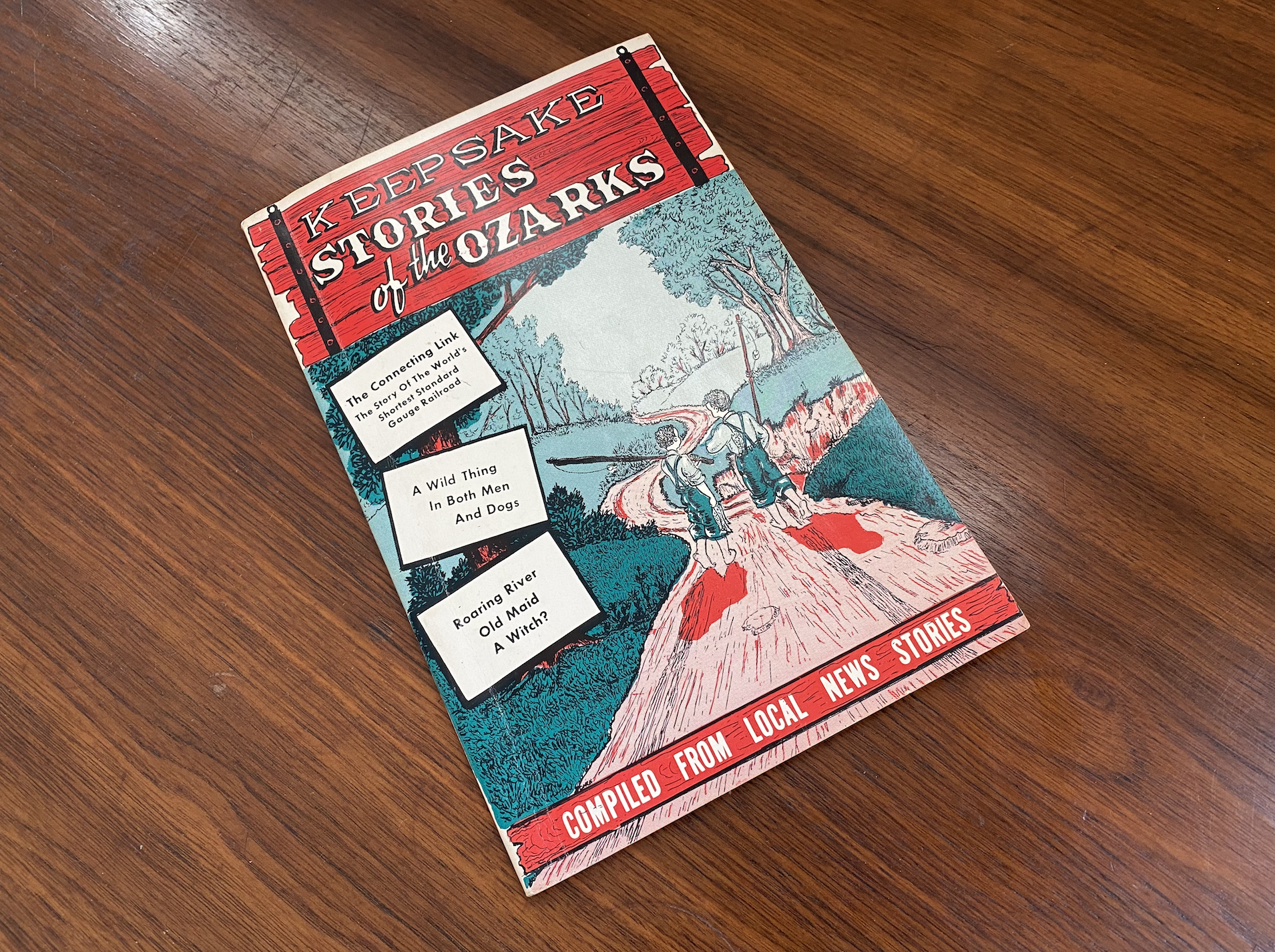ROARING RIVER - The fishermen at Roaring River State Park for trout season’s March 1 opening might not have been there if not for the circus.
And no, I’m not referring to fish that are trained to get away.
While the hill-hidden area has long been a destination, and for many years the site of a small community, Roaring River — located around 65 miles southwest of Springfield in Barry County — began its path to becoming a state park in 1928.
That year, a man named T.M. Sayman purchased 2,400 acres of land and 20-million-gallons-a-day spring, and gave it back to the people of Missouri for a state park. He paid $105,000, which according to an online inflation calculator is more than $1.7 million in 2022.
He was unassuming when he stood at the Barry County Courthouse and kept bidding on the property, which was being sold through foreclosure. Folks were surprised that he was able to pay cash for the property when the gavel fell — just as they were surprised to learn it was Sayman, described in newspapers as an “eccentric” man who made a fortune in soap production after he ran off to join the circus as a child.
I am able to share this with you today because of a small, colorful book from 1972. “Keepsake Stories of the Ozarks,” was the name that called me closer when I randomly pulled it from the shelf at one of our local historical museums.

A flip through its pages reminded me of people like Jean Wallace, a clairvoyant woman who lived in Barry County, and the story of the world’s shortest standard gauge railroad. Then there was one titled Roaring River Gift of Soap King.
“While Mr. Sayman will be remembered for his generosity, he will be remembered too for his eccentricities,” the book’s pages noted. “For he became a kind of legend, always good newspaper copy, and he lived his life with an almost theatrical flair. And he seemingly enjoyed every moment of the limelight. As a ‘character’ of his age, he had no peer. He often expressed intention to live to celebrate his 125th birthday; and as he seemed to accomplish everything he set out to do, few people who knew him doubted that he would do just that.”
Despite his decree, Sayman did not live until that age. His life, however, was filled with many other moments most of us would likely find unique.
He gave a two-and-a-half-hour-long speech at his 81st birthday party. He said that he had 14 (or so) cars at one time. He had more than 50 encounters with police in St. Louis, many of which involved brandishing of his blue-steel revolver nicknamed ‘Ol’ Becky.” He was often referred to in newspaper articles as “doctor,” but the truth around that title is unclear.
According to the Springfield Leader and Press in 1937, “advertising distributed with his products relates Sayman entered a medical college when he was 18 and studied four years. It does not name the school.”
But let’s start with the circus, which he joined after leaving home, barefoot and overall-clad, when he was 9 years old.
“At 10 he joined a circus touring Canada, and later was a trouper in P.T. Barnum’s big show,” the Leader and Press continued.
I have yet to find out much about his time under the big top. This is partially, I suspect, because he wasn’t there terribly long and because his life was so busy with other equally unorthodox endeavors that it seemed less fascinating.
The little book says the next year — when Sayman was 11 — he organized his own medicine show. In days gone by, medicine shows were opportunities for salesmen to go on the road, rolling from town to town, hawking miracle cures for all that ails you.
“Sayman used ‘medicine show’ tactics in selling his soap, from his wagon, or from a collapsible platform he carried about with him,” noted the Leader and Press in 1938. “Springfield was one of his stops, and he frequently made his sales on the public square.”

The timeline is a bit fuzzy, but it appears that along the way he “discovered” a unique formula that made his soap better than all others. He set up his first laboratories and offices in Carthage and remained tied to the town until he moved operations to St. Louis in the early 1900s.
While reading through these newspapers, I began to wonder what, if any, connection Sayman had with Barry County and Roaring River. In those days, connectivity throughout the state and region was much more limited than it is today. While Roaring River — and relatively nearby Eureka Springs — definitely attracted visitors, St. Louis was a long way away. Was there a personal link that led to his later purchase? Did he simply see it as a good investment?
These thoughts made me wish I could call Emory Melton. Longtime Ozarkers may recall Mr. Melton — really, Senator Melton — who wore many hats hereabouts, including as attorney and newspaperman, and who for many years was the default historian for Barry County. I was fortunate to interview him about his life in 2015, just a few months before he passed away.
But then I remembered that, during our visit, he gave me a copy of “The First 150 Years,” a book about Cassville that he published in 1995. I went home, pulled it off the shelf, and sure enough: His section on Roaring River does mention Sayman and leads up to his purchase of the land, which at the time was a failed resort development:
“When the sale began on the steps of the Barry County Courthouse at Cassville that Friday, November 16, 1928, a small crowd was present for what would seem to be an ordinary auction. These are still area residents living who remember witnessing the proceeding.
Bidding started off at a lively pace, helped along by a man unknown to most of the spectators, who was placing bids with enthusiasm and an air of determination. He was finally asked, ‘Do you realize this is a cash sale?’
“The reply was of course in the affirmative and, when the gavel fell, Sayman paid for his new ‘playground’ with an astonishingly large roll of bills.”
Melton didn’t, however, address a connection between Sayman and Roaring River. I did find an article from a few years prior that notes Sayman and his family vacationed there, so maybe he just really enjoyed the area and wanted to take it on as a business opportunity.
“Dr. Sayman has enjoyed exceptional success as a fisherman, landing a number of large rainbow trout with which Roaring River abounds. He is considering a plan to erect a summer home at Roaring River.”
Now, you may note that I mentioned he potentially took the property on as a business opportunity. One article noted that he was heralded by locals as an outstanding citizen for his plan to build a “fireproof hotel” on the grounds. Obviously, that didn’t happen — but would you believe it was because of mortgaged fish?
Well, much of this is speculation at this point, but some accounts suggest — including Senator Melton’s book — that after the purchase went through, Sayman discovered that very problem.
“The story went that Sayman, in buying Roaring River, believed himself to be the sole owner of all contained therein, only to find out a few days later that the trout had been mortgaged and, in fact, were about to be repossessed. In a fit of indignation, Sayman simply gave away the whole thing,” noted Melton in his book.
Four days after Sayman was recognized by local civic leaders for being for his efforts to further develop the property, he phoned Missouri Governor Sam Baker to make an offer, the Springfield Leader noted:
“It is my desire to make clear to the people of Missouri that it is my sincere hope that they will derive from Roaring River the same pleasure which I feel in making this gift to our state,” Sayman wrote in a letter to the governor offering the park to the state, and in part reprinted by the paper.
The deal was official by the end of the month, when Sayman gave the deed to the property to Keith McCanse, the state game and fish commissioner. His generosity was praised by the St. Louis Star paper in an editorial that was reprinted in Springfield:
“With its great spring, fish hatchery, summer cottages and hotel, the state and its citizens acquire an asset whose value is far more than even the large sum Dr. Sayman paid for it. It is one more added to a rapidly growing chain of state parks.
“Dr. Sayman’s generosity could well be imitated by others. There are vast tracts of cut-over timber and hill land in the Ozark region that could be turned over to the state for recreational and reforestation purposes without great financial sacrifice. Much of this land does not ever return the taxes to its present owners. Such gifts would be as fine a memorial to the donors as this Barry County tract will be to Dr. Sayman.”
Sayman was immediately made a deputy game warden in return for his gift, which included privileges to carry a firearm — but, per the Springfield paper, “They were withdrawn after several complaints.”
Sayman lived nearly a decade after his historic gift. He died in 1937, an event that made front-page news in Springfield: “‘Dr.’ Sayman’s colorful life is ended at 84,” the headline read.
His legacy, however, lives on nearly a century after his death and continues through each visitor to Roaring River. And Senator Melton — whose name is also forever tied to the park through his namesake Emory Melton Inn and Conference Center — agrees through the pages of his book:
“Whether the offering was made through philanthropy or pique, the fact remains that it was a generous gift, and one that will be long remembered, not only by the residents of Southwest Missouri, but by the thousands upon thousands of visitors to the park each year.”
Resources
“‘Dr.’ Sayman’s colorful life is ended at 84,” Springfield Leader and Press, Sept. 7, 1937
“Dr. Sayman spending vacation in Ozarks,” Springfield Daily Leader, Sept. 1, 1923
Editorial, Springfield Leader, Dec. 24, 1928
“The First 150 Years,” Emory Melton, 1995
“Keepsake Stories of the Ozarks,” 1972
“Roaring River most visited state park in 2021,” Sheila Harris, Joplin Globe, Jan. 26, 2022
“Roaring River park deed given state by Doctor Sayman,” Springfield Leader, Dec. 21, 1928
“Sayman gives Roaring River resort to state,” Springfield Leader, Dec. 5, 1928
“Sayman ‘spy’ seeks $99,000 from estate,” Springfield Leader and Press, May 11, 1938



